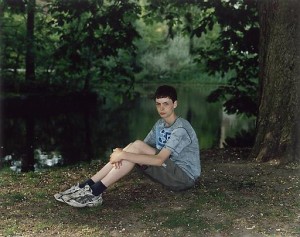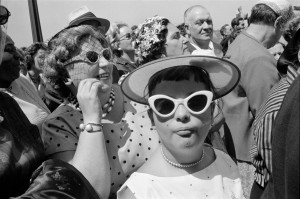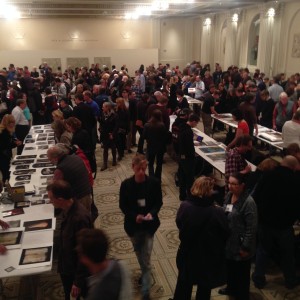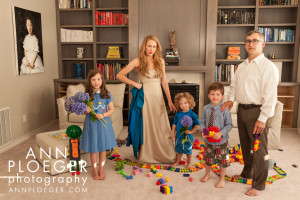Portraiture has a long esteemed and reviled history in the annals of art history. At once it is a way to support the business of making art, a necessary evil, and at once a serious exploration of the dynamics and psychological tensions between sitters and artist. While I am mostly familiar with the history of painting portraiture, I’ve had more practical experience in photography with trying to memorialize my young family as we speed through the sands of time.
Fine art photography and portraiture, while one would assume otherwise given the proliferation of technologies and editing tools, are very rare these days. There are thousands of street photographers trying to capture the candid essence of the times a la Henri Cartier-Bresson, or the stark minimal portraits of Rineke Dijkstra- an ascetic compliment to the arte povera resurgence in the art galleries which use found or spare materials to convey a poem of our fragile existence. And of course the sea of photographers that are not artists, but simply hired lenses sculpting their brands with a filter or two and a certain mis en scene that runs through all of their portfolio lest the audience wonder off or become confused.

VONDELPARK, AMSTERDAM, MAY 12, 2006. Image courtesy the artist Rineke Dijkstra and Marian Goodman Gallery.
So how do you spot a quality, fine artist as photographer now? How is one an artist and not simply a lens? Inevitably it falls back on the question the photographer is asking when he/she picks up the camera – the intention behind everything. If there is no question, or the question is not right, then the photography is simply a documentation and not art.
I had the pleasure to peruse 100’s of portfolios last night at “Photolucida” held in a giant room in the Mark Building, adjacent to the Portland Art Museum. What struck me was firstly how many people were in attendance – mostly other artists and photographers I believe. And secondly, how far people had come to share their wares (Montreal!). This was a veritable farmer’s market of portfolios. I did not envy the artists as they answered questions and flipped the pages of their portfolios. My heart sank when there were pauses along the tables to a portfolio and their creator waiting patiently for someone to be interested while viewers swarmed the neighbors on either side of them.
Generally the work was meh. How could it not be? All printed at a portable scale, meant to prop up on a card table. Surely if installed with lighting, framing and adequate scale the works would have felt stronger or had a presence. But they didn’t to me as I walked through. Secondly the lack of people, or portraiture, was astounding to me. There were rare portfolios with people that I could see, and the ones that I did see did not make eye contact with the camera – this to me signals a lack of intimacy, an avoidance and a lack of courage. Capturing someone looking straight at the camera, on no uncertain terms, is bold and confident, and what I’m realizing is rare.
Photography is like surgery – painting is like magic. Painting has a much more forgiving audience – an audience that generously suspends disbelief when viewing a painting. When we look at photography we rarely suspend disbelief, instead we pour all of our beliefs into an image and hope it locks. Personally my north star is the domestic – which is likely why nothing in the portfolios appealed to me. Pictures of homes and landscape do not appeal unless they are filled with it’s inhabitants. There is nothing more terrifying to so many, nothing that creates more anxiety than the “domestic”. I constantly wonder why in my own life and in the lives of countless others as well as the broader media: why have we culturally dismissed and are terrified by the behind the scenes core – the home?
To return to the idea of photographic portraiture – when is it art, when is it not? Ann Ploeger is a fine artist photographer who focuses almost exclusively on the domestic. With all of it’s tension, baggage, lightness and darkness. While she has other projects that manifest different narratives, they are all fairly well controlled and surrounded by features of house and home. Home in our bodies, home in our minds and home as a psychological state. Her work first struck me as purposely highlighting this anxiety of the domestic with neither judgement nor agenda, and always with a healthy dose of humor. The images of families in their homes are simply beautiful question marks full of color and expert compositional maneuvers. As much as her work may comes across as of the moment, don’t be fooled, it is timeless and classic.
Unlike other artists who have gained much stature photographing people in their homes, Ann’s work seemingly runs the gamut of socioeconomics and lifestyle. Tina Barney comes to mind as her work is as colorful, candid and at times as humorous as Ann’s – though there is a different under current in Tina’s work given the prerequisite that the sitter be upper class members.
Critics of Ann’s work may see detachment, where she uses her subjects as objects just as she may use the garden hose or kitchen sink. I would argue that precisely because she uses them as objects makes the psychological and emotional effect of the portrait that much more powerful – the subjects are looking right at you as objects – how do you respond?
Tagged: Ann Ploeger, fine art photography, Henri Cartier-Bresson, photography, Portraiture, Rinke Dijkstra, Tina Barney


0 Comments
Would you like to share your thoughts?